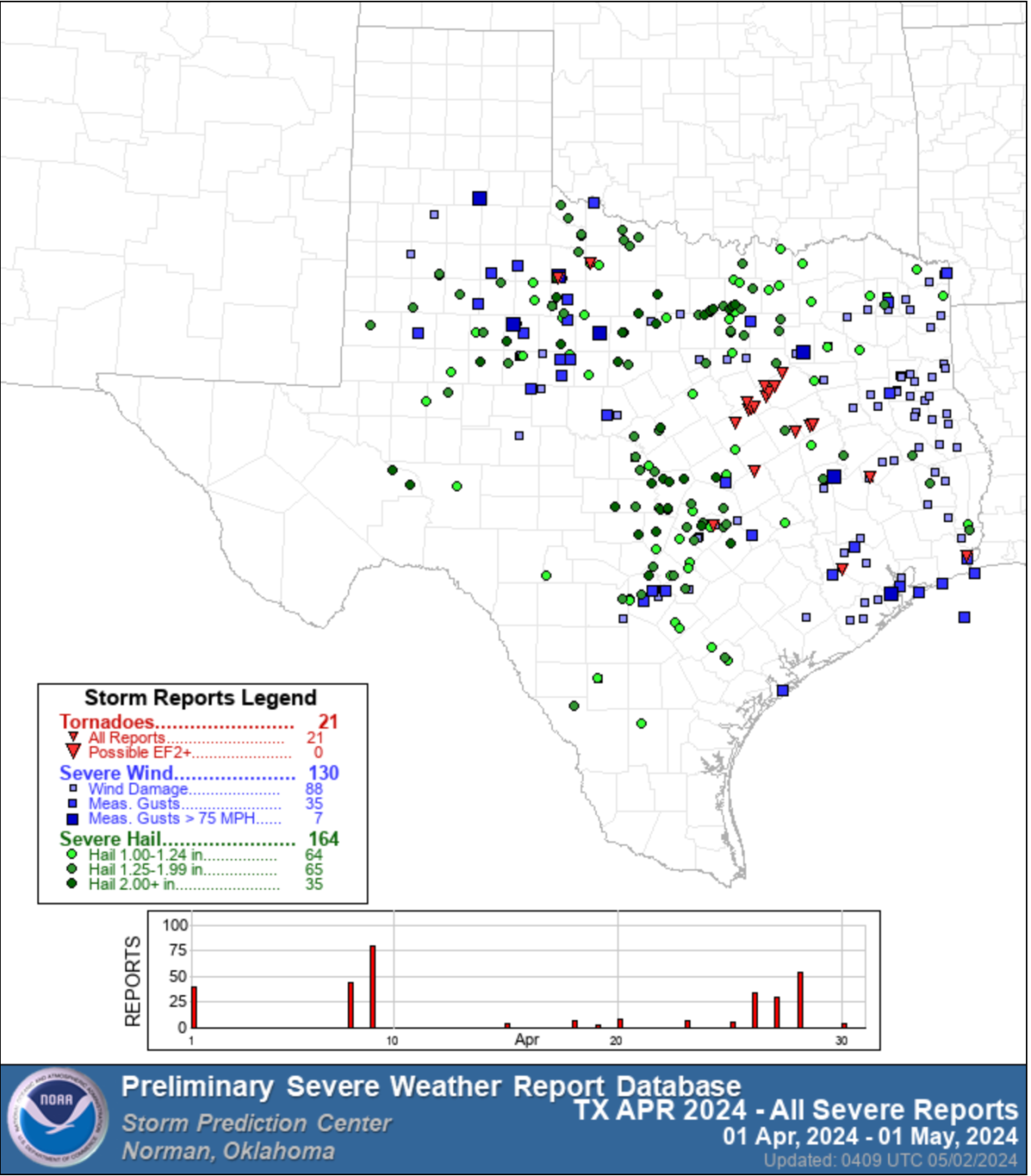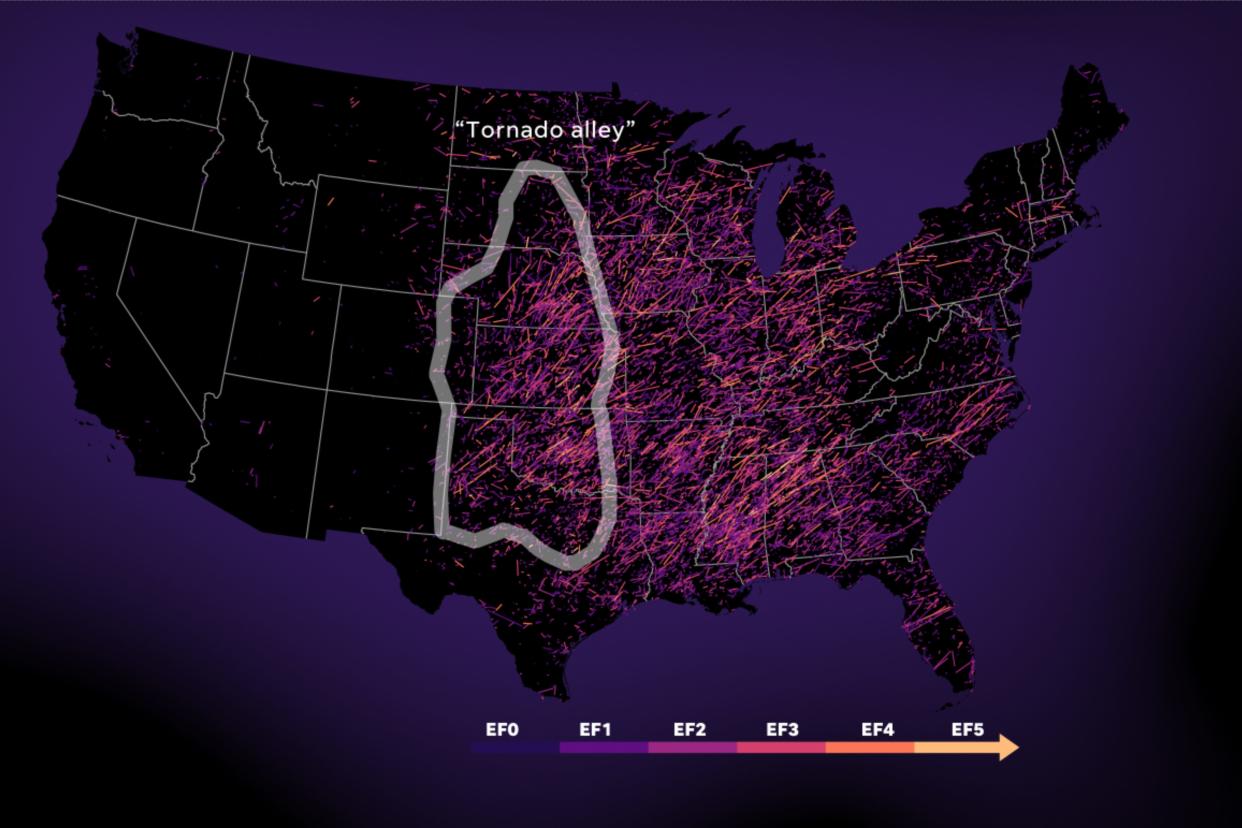373 tornadoes hit the US in April — nearly double the average. Here's how many hit Texas
Just four months into the year, tornadoes have nearly reached half of the annual average recorded over a 10-year period. April alone accounted for more than one-fourth of the annual average — approximately 1,200 — tallying at least 370 tornadoes across the United States, preliminary data shows.
Texas was at the front end of one outbreak last week when the local National Weather Service office identified 14 tornadoes within a 24-hour span in Central and East Texas. None resulted in injury or fatality, although the same outbreak formed several deadly tornadoes in Oklahoma and Iowa.
More: NWS: 12 tornadoes touched down in Texas this weekend. Here's where
Preliminary data from the National Oceanic and Atmospheric Administration Storm Prediction Center show that the U.S. has documented at least 549 tornadoes up to this point in the year, far surpassing the 10-year average of 379 tornadoes typically seen from January to April.

Approximately 373 tornadoes came in April, nearly doubling the 10-year average of 177 tornadoes for the month; in Texas, 43 tornadoes have touched down, year to date, with 21 occurring in April.

Here's everything you need to know about tornadoes.
How are tornadoes formed?
At the root, tornadoes form when the weather has featured all the right ingredients: large amounts of water vapor and vertical wind shear, which is essentially "how winds change speed and direction in height."
This often happens in the eastern half of the U.S. when dry winds coming in from high over the Rockies meet moisture-rich, low-level winds coming from the Gulf of Mexico, according to USA TODAY.
Where is tornado alley?
From the 1950s to the 1990s, tornadoes have primarily touched down in the states centered along the 100th Meridian (or the 100-degree west longitude line) from South Dakota to Texas — otherwise dubbed "Tornado Alley."

In the past decade, however, the dryline has shifted eastward by about 200 miles, ramping up tornado activity over a large portion of the Midwest and Southeast. This includes the lesser-known tornado-prone region formerly called "Dixie Alley," which is distinct because its outbreaks are often more destructive and deadly. (Note: The Weather Channel has abandoned the term citing racial insensitivity, but a new term does not yet exist.)
This region stretches from eastern Texas and central Arkansas to Georgia and reaches as far north as southwestern Kentucky, southeastern Missouri and Tennessee.
'Tornado Alley' is expanding: Southern states see more twisters now than ever before
All-time records for tornadoes have historically occurred in April
April has historically witnessed some of the most severe tornado patterns on record, including the largest and second-largest outbreaks in recorded history.
On April 27, 2011, the U.S. experienced the highest number of tornadoes in a single calendar day, with 209 tornadoes forming across the country. Additionally, in 1974, a total of 148 tornadoes touched down in at least 13 states from April 3 to April 4, resulting in the deaths of 335 people and injuries to over 6,000 individuals. This event also holds the record for the greatest number of F5 tornadoes in a single day.
Tornado watch vs tornado warning: What's the difference?
Tornado watch: Tornadoes are possible and residents should be alert.
Tornado warning: Tornadoes have been spotted or indicated on weather radar, and residents should seek shelter immediately.
Which state gets the most tornadoes?
Here are the top 10 states with the most tornadoes per year, according to 1997-2021 averages:
Texas
Kansas
Oklahoma
Illinois
Alabama
Mississippi (tie) / Iowa (tie)
Florida
Nebraska
Missouri
Interactive map shows history of tornadoes in Texas since 1950
The National Oceanic and Atmospheric Administration has been tracking tornadoes for decades.
Our interactive map, which contains data from January 1950 to July 31, 2023, pinpoints where a cyclone touched down and traces its path of destruction.
For more recent tornadoes, clicking deeper provides more details, damage estimates and whether someone was injured or killed in the storm.
— USA TODAY contributed to this report.
This article originally appeared on Lubbock Avalanche-Journal: 373 tornadoes hit the US in April. Here's how many hit Texas
